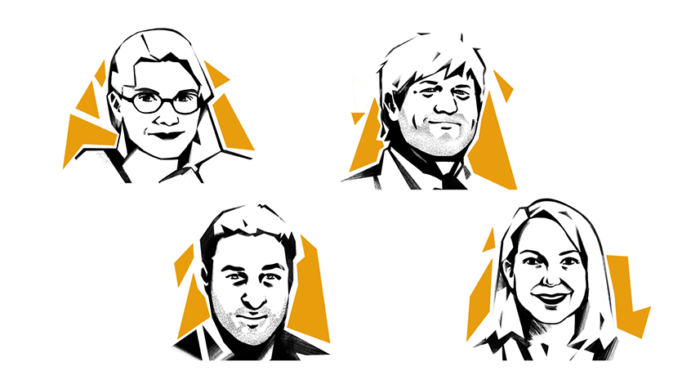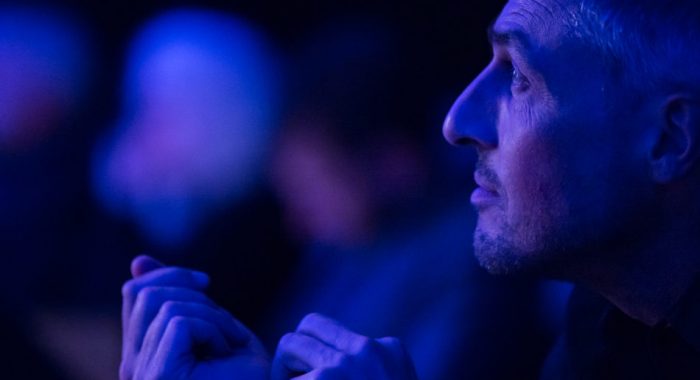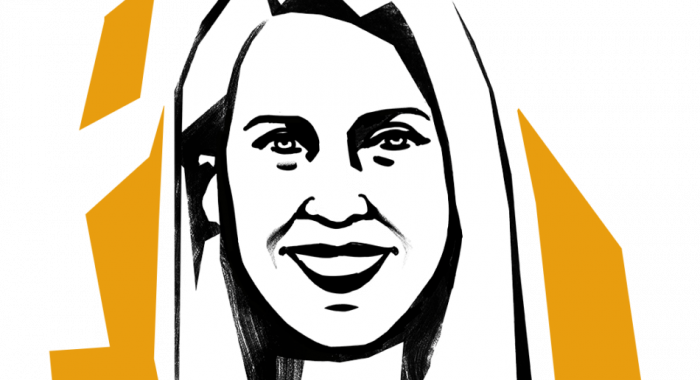The seventh edition of our international conference tackled the troubling realities of our age and looked at how stories can explain them, put them in context, while also giving a voice to those that have not been heard. We saw on stage 13 amazing speakers – Pulitzer Prize-winning journalists who wrote about human tragedies, investigative reporters, award winning visual storytellers, mental health professionals who heal towns, media innovators who tell stories through audio, virtual reality or live performances – who shared from their experience, offered useful tips and advice and inspired us to become better.
Here are the main takeaways from the first day:
SARAH STILLMAN:
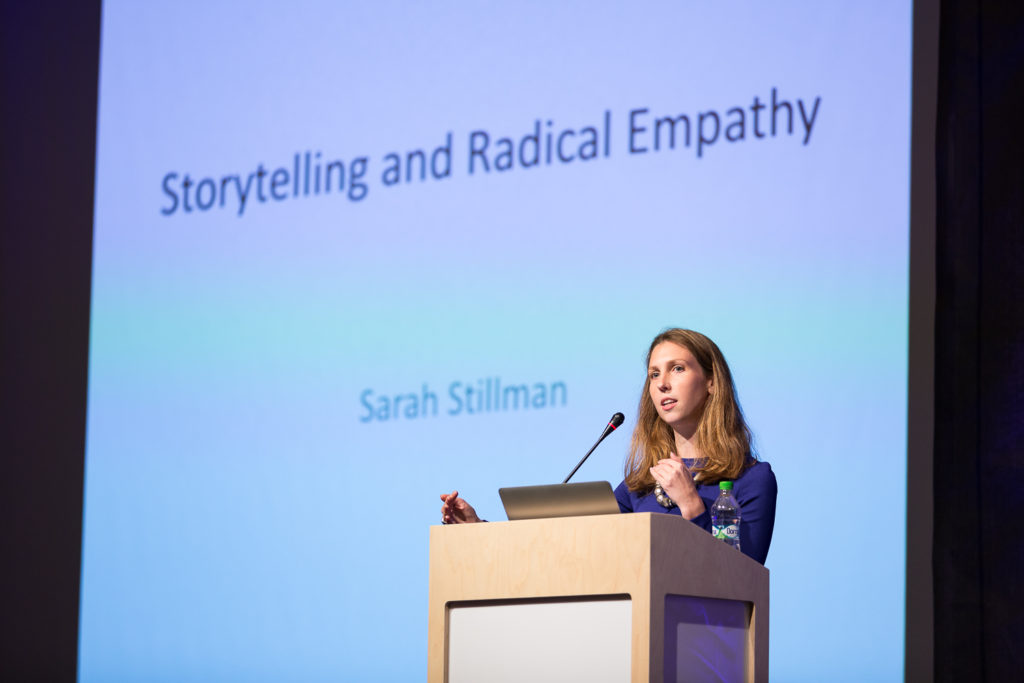
Journalist and 2016 MacArthur fellow Sarah Stillman started the first day of the conference with a keynote on storytelling and the need for radical empathy, because “That is what the world demands at the present moment and I’ve been in a state of despair and distress on whether storytelling is the right medium for the present. I still adamantly believe in the power of the stories.”
She then offered five important reminders:
- Train your eyes for the margins: cultivate a radical curiosity and train your inner alarm bells.
- Don’t await permission, just show up: I told the story of war not because I was the most experienced reporter, but because I showed up.
- Get granular: get beyond binaries of worthy/ unworthy, victims/ perpetrators, get beyond trauma and despair, search out the quiet moments.
- Get systemic – offer patterns, not just individual data points. Remember that the really gripping stories are told about one person and one place, but you have to also offer historical context.
- Get kinetic, involve your body in storytelling: if you’re present, you’re helping someone un-drown themselves.
“We tell our stories in order to unburden ourselves.” @stillsarita #story17
— Andreea Bota (@AndreeaBota_) October 20, 2017
FINBARR O’REILLY:
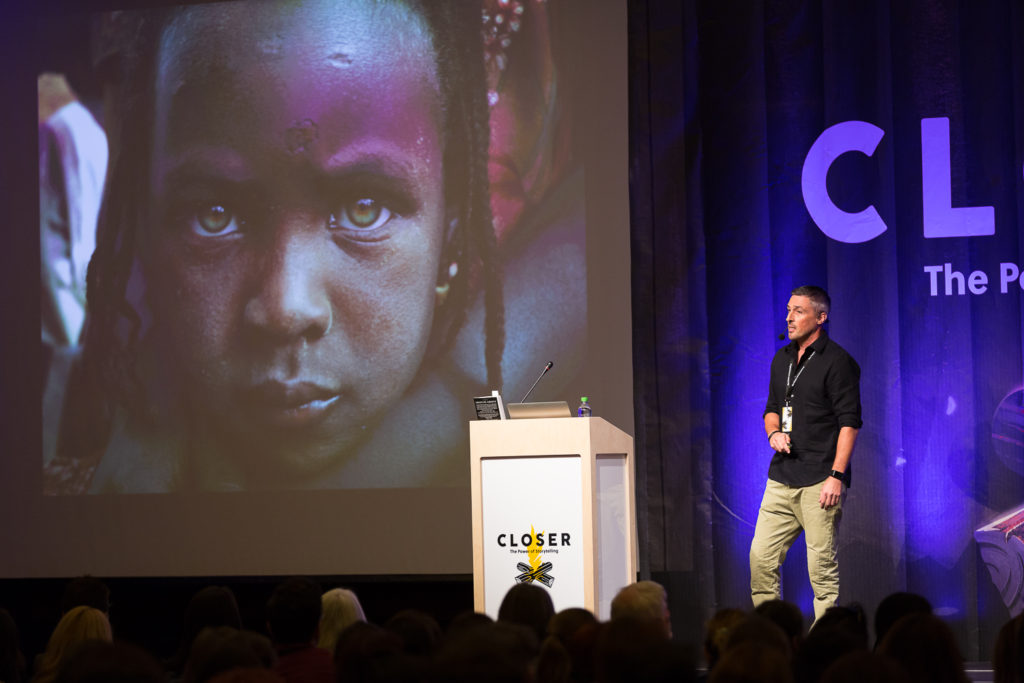
Award-winning photojournalist Finbarr O’Reilly then talked about his experience as a photojournalist in conflict zones, his attempts to look for the quieter moments between the violence, and the impact war photography had on his life.
- As a form of storytelling, I realized that images would have this impact in a way that my news dispatches couldn’t.
- The challenge for me was not to fall in the clichés that we often see in these parts of Africa. My challenge was to capture and show the strength of character and the resilience of people living in these circumstances. I wanted to capture that spirit that left me feeling pretty humble and share a more nuanced and balanced view, to show that in the shadow of these conflicts, life goes on.
- I began to question the work that I was doing. I started to feel my photographs weren’t benefiting the ones what were in my images.
- The Gaza War was the most violent war I had ever seen. Photographing the victims, the morgue, the despair, I felt I became part of the media circus surrounding the war. This was a tipping point for me, I felt I couldn’t do this anymore.
- I warn against comparing experiences, because it’s not helpful. Everyone’s experience is valid to themselves.
- Shooting Ghosts, the book I wrote together with sgt Thomas James Brennan, is about friendship, how we leaned on each other and helped each other through these difficult and challenging times. It was all about re-engaging first with each other, and then with the world around us. Because trauma turns us inward.
.@finbarroreilly's visual stories from his time in Africa are an excellent example of the impact that photography can have. #story17 pic.twitter.com/uNo5T70sIP
— Ana Marica (@Ana_Marica) October 20, 2017
MINDY FULLILOVE:
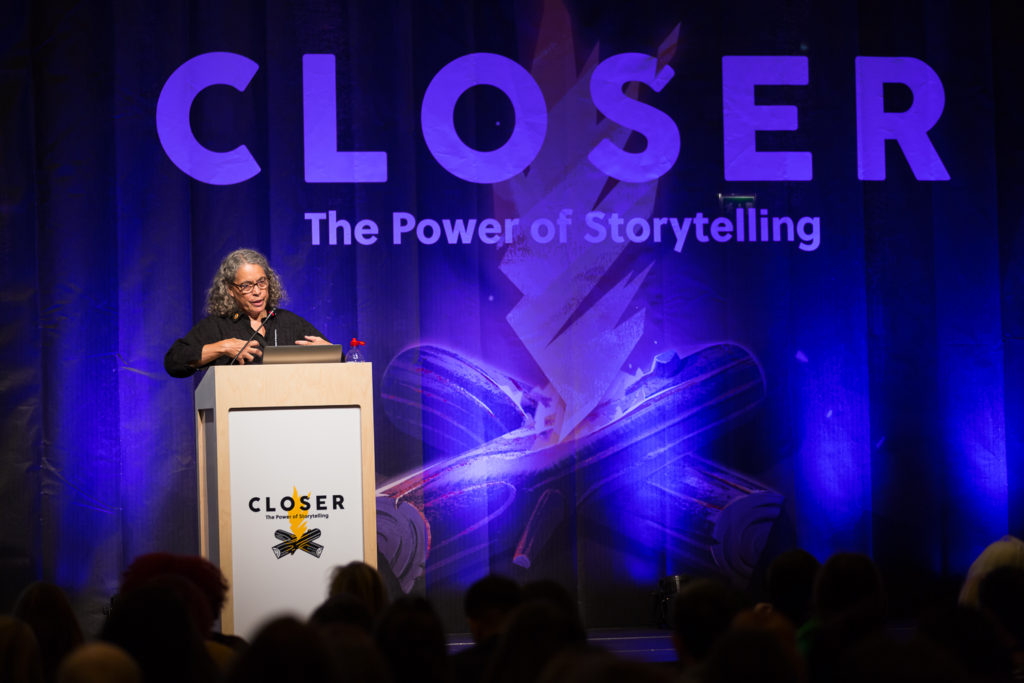
Board-certified psychiatrist Mindy Fullilove talked about her place of origin, Orange, a predominantly black city struggling in the aftermath of segregation, deindustrialization, and gentrification, and how telling its story has helped people have a different, more accurate and more loving perception of the city.
- The flipside to segregation is separatism, and that is often celebrated – it certainly was in the 1970s. My dad said separatism for black people is impossible, and black workers and white workers learned to come together through the unions – they were more impactful that way. As long as we were divided, we could be defeated.
- I understood that everything you needed to know about the American city is right there in Orange, if you just listen to what people have to say. The city is the cumulative product of all those stories.
We know the chasm is real and it is all of these things that have torn apart the American society: the highway that wiped out houses and replaced them with a place for cars, the deindustrialization, the segregation. The chasm is real and it’s the reason why America is in the trouble it is in at this moment. - This experience of stories had taught us that there was a magic prison and that was where we had to start. If we didn t understand the complexity of the city, we couldn’t bridge the chasm. People had to hear each other.
- Looking straight at people and stores, and saying there’s nothing there is a trick of our minds. If we don’t see Starbucks, we see nothing. So how do we begin to see what’s in front of us and how do we make the leap to believe that everything we need is already here?
NIKOLE HANNAH-JONES:
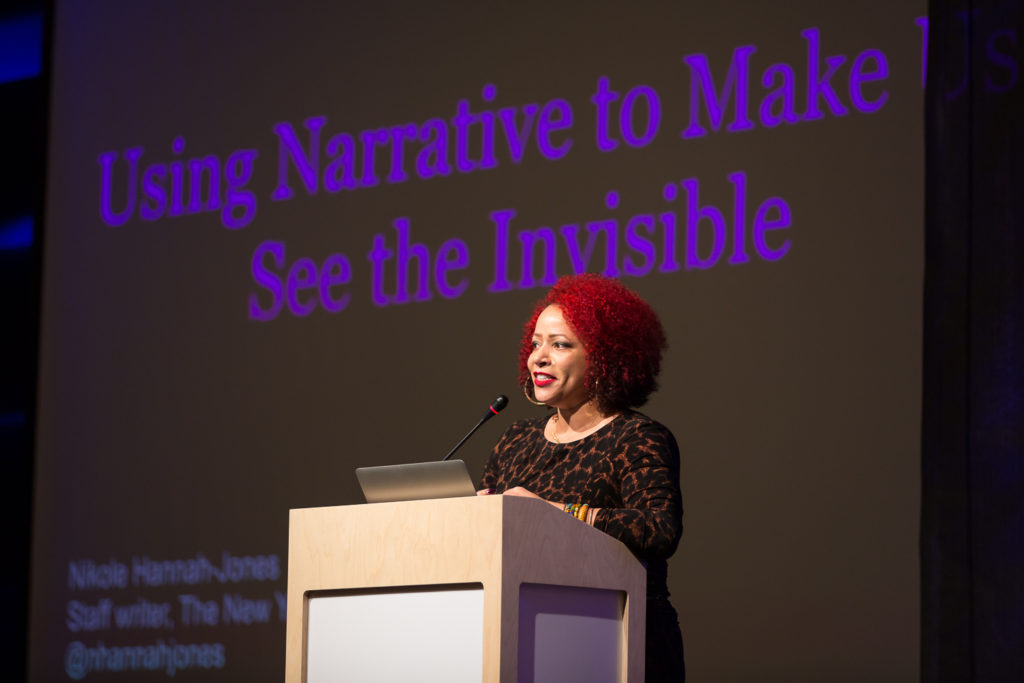
2017 MacArthur Fellow Nikole Hannah-Jones gave a powerful talk on using narrative to make people see the invisible stories of marginalized people, giving examples from her work covering racial segregation in the U.S.
- Every country has its marginalized people, it seems to be a part of human nature. Things are often invisible because we chose not to see them.
- When I joined the high school newspaper I understood the power of storytelling and the power of being able to tell your own stories and not allowing someone else frame how you see yourself.
- I knew I wanted to write about racial injustice, which I found essential for the U.S. There’s not a thing in the U.S. that racial inequality doesn’t touch. Black Americans are at the bottom of everything you can measure in U.S.
- I decided early on I wanted to cover education because this is where we believe our most democratic values come in place. We truly believe in the U.S. that public education allows you to change your life. Except I was seeing every day that wasn’t true for lots and lots of kids. We had two philosophies: educating certain kids for democracy and educating certain kids for oppression. You can imagine who they are.
“I was curious about the world, and history calmed me.” – @nhannahjones about her nerdy childhood. #story17
— Andreea Bota (@AndreeaBota_) October 20, 2017
She then presented some of her most important values as a journalist:
- Meticulously reporting: The kind of reporting that I do is making an argument. I have to convince you that what you think is right is not right. We can’t expect people to trust what we tell them, because people don’t trust reporters anymore. So there has to be reporting that cannot be disputed. I read obsessively on everything I’m reporting on.
- The stories have to be intensely narrative. It can’t be a story about abstract content. If you don’t have humanity, you can spend a year on a blockbuster investigation, people will not care if you don’t show a human aspect they can relate to. Narrative means you’re telling a story all the way through, and that means you have to spend a lot of time to gather the information.
- My work is deeply historical. It’s important to say: This is not by accident, we have created this, its foundational. The running joke in my office is all my articles start in 1619. But if you want to undo the harm, you have to put an equal amount of time that was put to creating it. And if you don’t undo it, it’s not going to change just because the law says so.
Great talk from @nhannahjones at #story17 – reporting on racial inequality should be meticulous, intensely narrative and deeply historical.
— Cat Albeanu (@catalinacma) October 20, 2017
VALERIU NICOLAE:
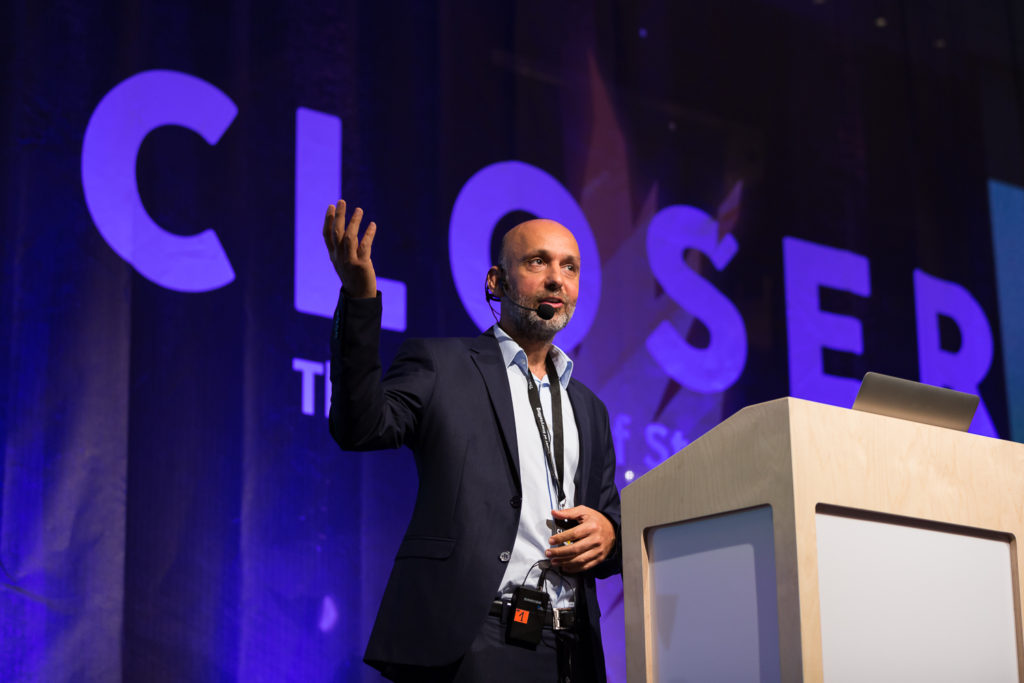
Social change maker and founder of the Policy Centre for Roma and Minorities, Valeriu gave a bitter-sweet talk on his personal encounters with racial stereotypes, followed by video bits from a documentary on the lives of children living in the ghetto of Ferentari, Bucharest, and struggling with addiction.
- “My sports teacher, who was also the basketball coach, told me to get used to failure. I heard the same advice many times during my life. So I told my teacher to fuck himself off and trained myself to be better than his players. I accepted that I am a disruptor and hate authority, and that won’t make my life easier, but maybe it will make others’ lives better.”
#story17 An important lesson about failure and success from Valeriu Nicolae. Great speech, i wasn't expecting less!
— Elena Pochia (@eleny_eli) October 20, 2017
PAT WALTERS
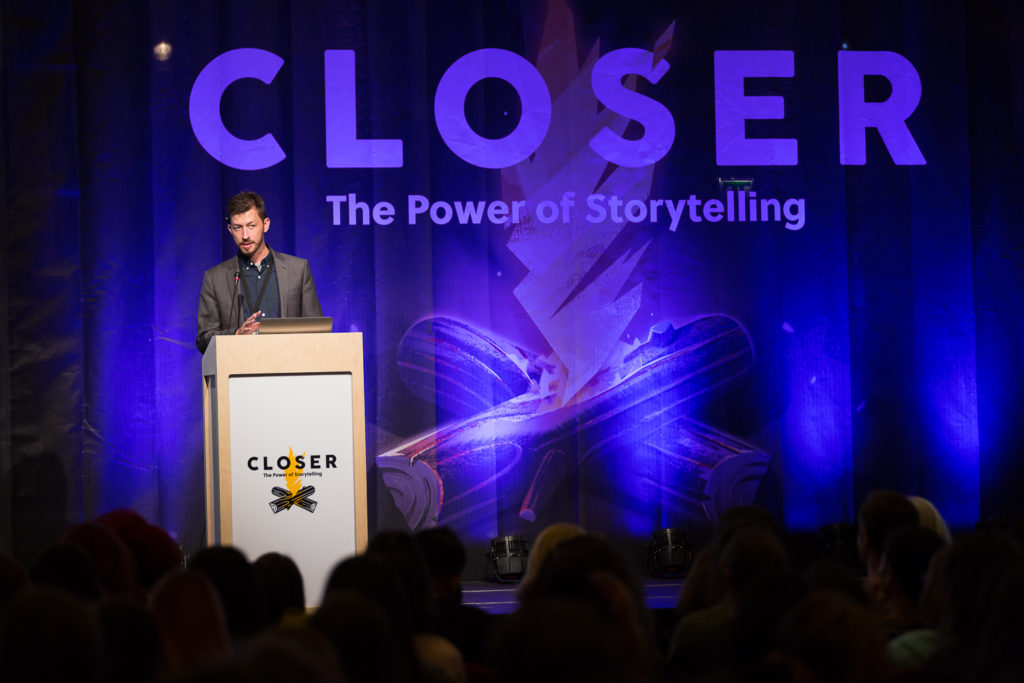
Audio reporter and editor Pat Walters talked about the special powers of audio and walked us through a Radiolab story about blindness to demonstrate the four fundamental elements of audio storytelling he always tries to keep in mind.
- Details. Audio stories have this sort of conversational vagueness. In writing we talk about the importance of details, about never being vague, but in audio, you can be more vague. If you don’t put all the details in you leave room for the imagination, you create gaps people fill in with their ideas and the story belongs to them. Of course you need details, but you can be selective.
- Questions. By being in the story and asking the questions, the reporter becomes a proxy for you, the listener. He brings you into the room, closer to the story. This is hard to do in other mediums.
- Dialogue. You can have two people talking in a way that is natural and unperformed. This kind of interaction is fundamental to life but so difficult to catch in a story. Audio makes it easier, all you need is a recorder.
- Sound. This is obvious, but it’s so easy for people to forget about it. When used fully, it can express an emotional experience, by using three layers: voice, music, sound design. Music is very dangerous, but it can be wonderful also. Used badly it can ruin your story, or it can crush an interesting idea into a cliche. But when it’s used right, it can transport you to a place that a character was in, where a visual image can’t transport you to.
“The rule in audio is to be selective with your details.” – @patwalters #story17
— Andreea Bota (@AndreeaBota_) October 20, 2017
JENNA PIROG
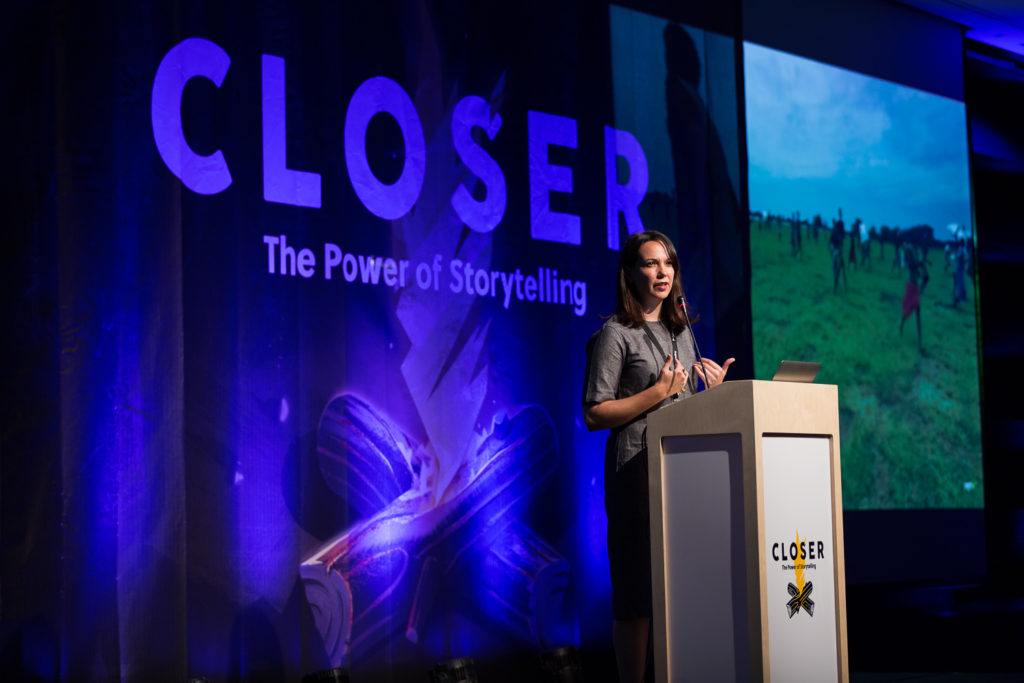
The New York Times VR editor Jenna Pirog turned our minds towards the future of storytelling by sharing valuable insights on what it means to build immersive stories using virtual reality technologies.
- We are more connected now than at any time in history. We have access to a lot and you can stay in touch with everyone you’ve ever met, thanks to these little screens. Now it’s time for VR to make its entrance in our world.
- The promises of VR are not isolating, it promises to transport us to places we can’t go to and witness things we can’t see or meet people we can’t otherwise encounter.
We knew if we could find a way to share VR with our subscribers and make it accessible, we could start a revolution. - VR works when you use your instincts and you forget you’re not there in the moment. It’s when you make your own decisions.
- We’ve learned so much, but the medium is continuing to evolve. The audience now want to be able to select things. And what’s next after that? I am of the firm belief that AR (augmented reality) is another medium that we need to be paying attention to.
What's next? Augmented reality, says @jennapirog from the @NYTVR. This day is getting us #closer to understanding storytelling #Story17
— Andreea Antonovici (@AAntonovici) October 20, 2017
TWO MEN TALKING
The day ended with an emotional live performance of Two Men Talking, the unscripted live show in which Oscar nominated filmmaker Murray Nossel and psychiatrist Paul Browde weave their life stories into a production that embodies the healing capacities of storytelling and open listening and demonstrates the power of acceptance – of self and other – in the face of a seemingly indifferent, sometimes hostile world.
“We tell stories to survive, it’s how we pass on information from one generation to the next.”
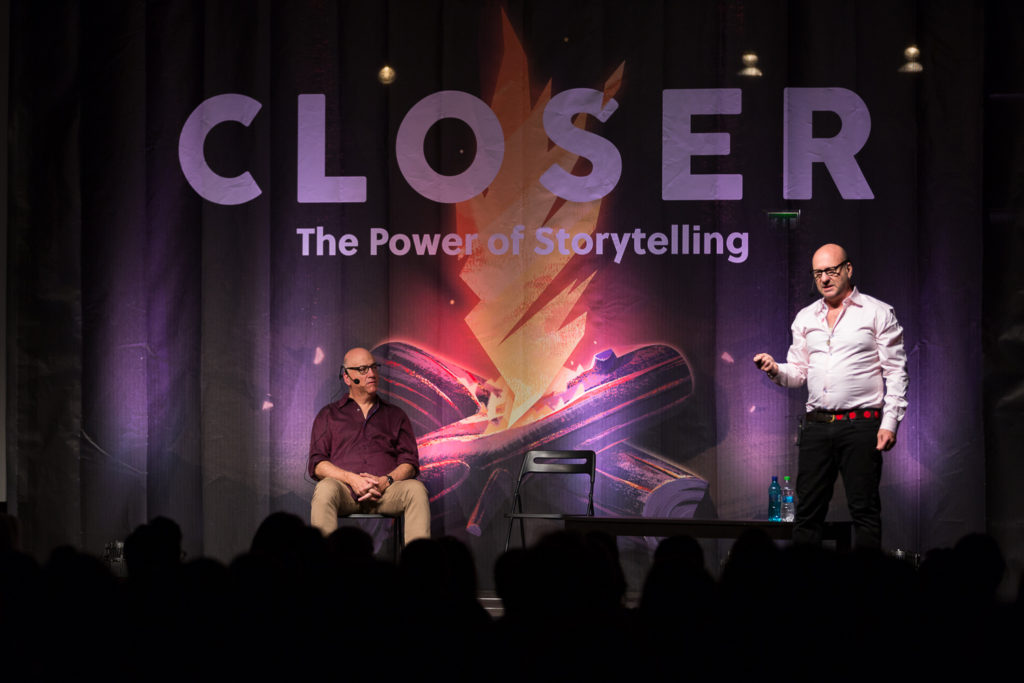
Photos by Cătălin Georgescu.
